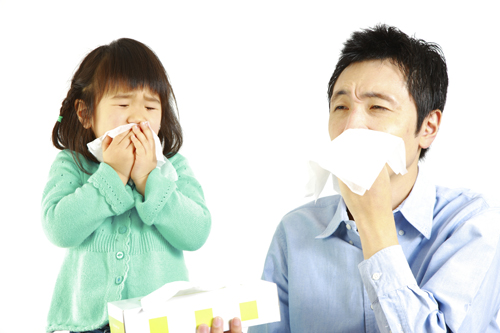
A large number of Orange County’s young and old are sniffling, sneezing or wheezing their way through spring’s allergy triggers. Allergies are the sixth leading cause of chronic illness in the U.S. with a cost of $18 billion, according to the Centers for Disease Control and Prevention (CDC). With increasing amounts of money being spent on treatment against outdoor allergens, we often forget about the small changes indoors that can collectively make a difference for our family.
According to Dr. Miles Masatsugu, Medical Director at CalOptima, the health insurance provider for thousands of adults and children throughout Orange County, it’s important to explore a few common indoor triggers that can bring on stuffy noses and watery eyes. His tips include:
Enforce Dust and Dander Borders: Dust is one of the most common triggers of allergy and asthma attacks. So when it comes to creating a safe zone at home, our bedrooms are at the top of the list. We often forget about the sneaky ways dust travels inside through toys, stuffed animals and other clutter. Make sure to keep your child’s bedroom clean and free of dust by regularly washing their bedding, stuffed animals, clothes and more.
Eye Your Pets: The biggest allergy culprit is pets. There is no such thing as a hypo-allergenic pet. Not only can Fido’s dander cause a reaction, he is also bringing in his day outdoors which can include dust, dirt or pollens. If pets are allowed inside, make it a family rule that your child’s bedroom is off limits.
Check Plants: On occasion we invite allergens inside through bouquets of flowers or potted plants. Aside from house plants like weeping figs and flowering maples that are common irritants, some plants like succulents can grow mold in the potting material which may not be visible. Look for ways to minimize these triggers indoors and consider decorating with dried or silk flowers and plants instead.
Monitor Moisture: Dust mites and mold thrive in moist environments. The Environmental Protection Agency (EPA) recommends keeping indoor humidity between 30 and 60 percent. Local hardware stores sell a moisture meter to easily measure humidity. Or you can keep an eye out for potential problem areas such as bathrooms, kitchens, under sinks or near windows. If your child’s allergies seem to get worse when the humidity in your house increases, you’ll know why.
Critter Control: Many common pests, such as cockroaches and some stinging insects, are known to trigger asthma and allergies. Critter droppings, saliva, and other remnants contain strong proteins that cause reactions, especially in children. So, keep an eye out for any unwelcome critters especially during the summer months when water is scarce.
It is important to remember that allergies in general cannot be cured but allergic reactions can be minimized or prevented. Research shows it is just as important to control environmental factors as it is to manage symptoms with treatment or other natural remedies. After all, it would be nicer to spend family time focusing on each other, rather than passing around the tissue box.









Leave a Reply